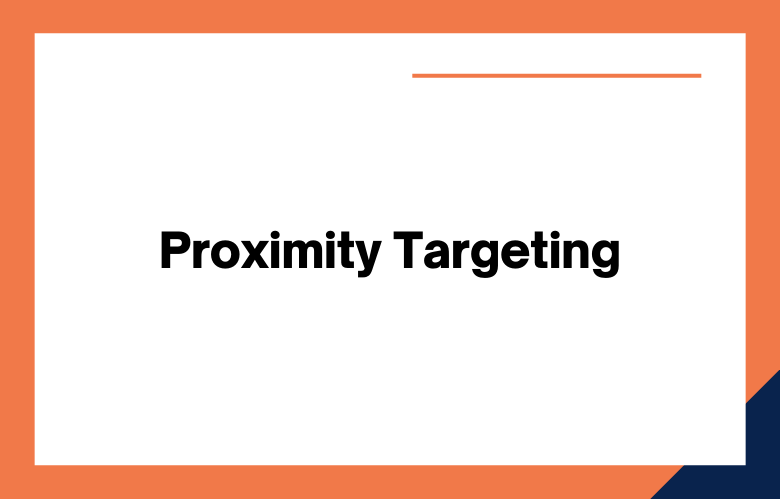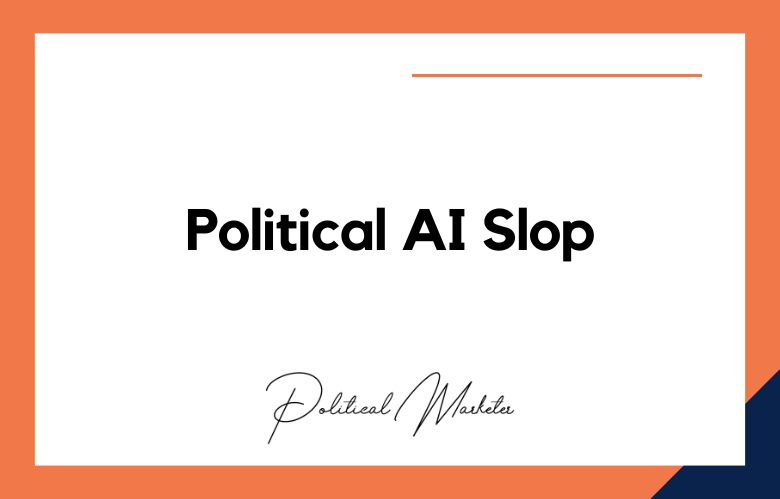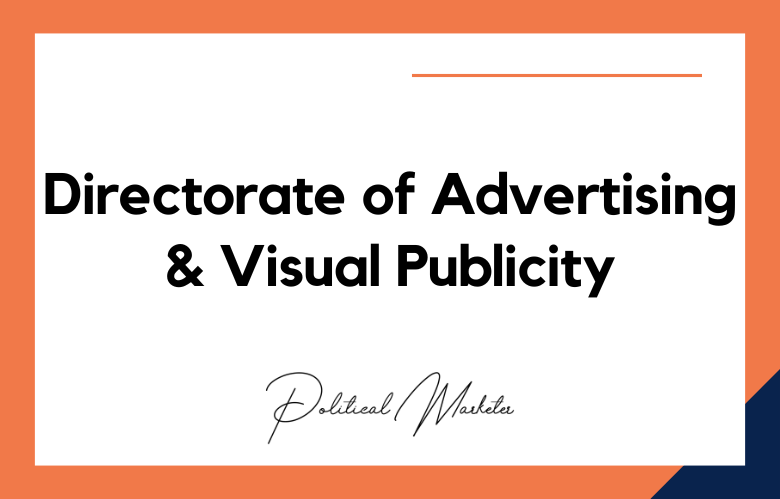If you’re like most people, you probably think of political campaigns as a big, expensive ordeal. You must spend millions of dollars on TV ads and hire armies of organizers to get your message out. But what if there was a cheaper, more efficient way to target your voters? Proximity targeting is a new technology that can help you do just that.
Have you ever thought of the term’ proximity targeting’? It’s a relatively new term used more and more in political campaigns, but what is it, exactly? And how can it help your campaign? In this blog post, we’ll answer those questions and give tips on targeting proximity to reach voters. Stay tuned!
What is Proximity Targeting?
Proximity targeting allows you to reach potential people right where they are. It’s an excellent way for businesses of all sizes, from restaurants and retail stores in your neighborhood or town to those with an online presence like Facebook pages-to, to advertise their products to nearby people who may not yet know about them!
Proximity Targeting is a new way to reach and engage with your voters. The technology uses their location as an opportunity for you, the campaign owner or manager in charge of marketing campaigns – it can help bring people into campaign promotion who might not have gone before!
It’s perfect if proximity means something important such as “right around the corner” from where they live; this type of targeting will ensure that every voter walking through those doors gets targeted based on what he needs most.
Proximity Targeting for Political Campaigns
Proximity Targeting is the future of politics! It’s a technology that can make your campaign more personal and engaging. For example, with this new system, you could send out personalized sample Ballots or absentee ballot applications based on where people live in their district so they know what to expect when casting their vote.
The new proximity targeting technology allows political campaigns to identify and connect with specific groups of voters based on their location.
Proximity Targeting is a system that uses your phone’s GPS signal, racetrack analytics, and other data sources like electoral rolls or social media posts to build maps identifying where certain groups live so they can be targeted more efficiently than ever before!
If you are running a political campaign, knowing how close or far your target audience lives from you is essential. There can be many benefits of targeting people nearby with ads and messages for their support to make them feel more connected, ultimately increasing the vote count!
Proximity targeting is a new way to advertise your political campaign by showing up in people’s inboxes when they’re nearby.
Politicians have used this technology since last year, but now it’ll be available for everyone!
How Does Proximity Targeting Work For Your Political Campaigns?
When running a political campaign, knowing how your ads will be targeted is essential. Proximity targeting means that the person viewing an ad has been physically located in proximity (i.e., within close range) at some point before they saw or clicked on this particular advertisement which could significantly impact their decision-making process when voting!
The concept of proximity targeting has been around for quite some time now.
This type of marketing strategy will allow you, as an organization, to reach out and touch people very close in proximity who may not have otherwise come across your notification banner on social media sites like Facebook or Twitter – even if they are logged into those platforms but not checking any updates from groups you’ve created!
It also means increasing awareness within this group, so there’s no chance they’ll miss what’s happening with our campaign (or at least learn about it faster).
Proximity targeting works for your political campaigns by identifying where the people who likely will vote in an upcoming election life. This information helps guide where you spend money on advertisements, increasing bang for your buck since only those areas need campaign posters or ads!
You can use proximity targeting to show your ads only when someone is nearby. This means that the person opening their phone’s Google Maps app will see an advertisement for whatever restaurant, coffee shop, or other business they are near at any time!
So, if you’re running a political campaign and want people who live within walking distance from voting locations shown as possible donors? Proximity Targeting could be what puts them on our list of potential supporters.
The best way for your political campaign to be successful is by using proximity targeting. This strategy will ensure that you connect with potential supporters in their neighborhoods, which means they’re much more likely than others who live far away from where we’re planning on holding our events or advertising materials (or both!). The closer an individual lives geographically, the greater chance they get involved!
Advantages of Proximity Targeting For Your Political Campaigns
In recent years, proximity targeting has been proven to be a very successful form of marketing.
This is because it helps you reach out and connect with people who are most likely going to vote for your candidate or initiative in an election campaign by showing them targeted advertisements on their screens while they’re browsing online content related to politics as well as other relevant topics such as current events that may affect voting decisions like healthcare reform legislation.
The advantage here lies in engaging more potential supporters and gauging interest levels among specific demographics. If any part of this strategy should prove ineffective, then we know what areas need improvement so we can work there instead!
Proximity Targeting is an approach to engage potential voters on the doorstep. It’s a great way to communicate your message and engage with people who support you!
The effective way to reach your audience is by targeting close ones. For example, proximity can make all the difference in politics when trying to find loyal supporters who will be happy to vote for you on election day!
Proximity targeting is a great way to reach more people in your area and has some other advantages.
For example
You can get an accurate idea of where they live, which can help with campaign logistics like planning events or sending out mailings -This type of advertising could fuel the flames on fire (ha) because we often feel closer than ever when the distance becomes irrelevant!
Proximity targeting is a way to target people who are most likely to vote in your area. It can help you reach those individuals with ads tailored specifically for them and their needs.
In today’s technology and social media, proximity targeting is a great way to reach your target audience. With this marketing strategy, you can use data from past election results to dictate where ads will be shown on television or online so that they’re more likely to see it than someone else who doesn’t live close by, which means higher conversion rates!
Conclusion: Proximity Targeting in Political Campaigns
Proximity targeting has emerged as a powerful and precise tool in modern political campaigning, enabling candidates and parties to reach voters in real time based on their physical location. Unlike traditional geotargeting, which focuses on broader geographic regions, proximity targeting operates at a hyperlocal level, leveraging technologies like GPS, Bluetooth beacons, Wi-Fi, and geo-fencing to deliver tailored political messages within meters of key voter hotspots such as polling stations, campuses, rallies, or swing neighborhoods.
This strategy allows campaigns to engage voters with personalized, context-aware content that aligns with their location and immediate environment, increasing relevance and engagement. It supports not only digital advertising but also field operations like canvassing, event mobilization, and turnout drives. By integrating location intelligence with voter data, proximity targeting helps campaigns influence behavior at critical moments, such as reminding voters to cast their ballot while they are near a polling booth.
However, while the advantages are clear, ethical and legal considerations must guide its deployment. Issues around privacy, data consent, and voter manipulation require strict compliance with data protection regulations and transparent practices. When used responsibly, proximity targeting represents a future-facing evolution in political communication, bridging digital precision with physical presence to shape electoral outcomes.
Proximity Targeting: What Is It, and How Does It Work For Your Political Campaigns? – FAQs
What Is Proximity Targeting in Political Campaigns?
Proximity targeting is a location-based digital advertising strategy that allows political campaigns to serve ads to voters based on their real-time physical location using technologies like GPS, Bluetooth, Wi-Fi, and beacons.
How Does Proximity Targeting Differ from Traditional Geotargeting?
While geotargeting focuses on broader areas like cities or zip codes, proximity targeting enables campaigns to reach voters within a very specific radius, such as 100 meters around a polling station, event, or political rally.
What Technologies Are Used in Proximity Targeting?
Common technologies include GPS, Bluetooth Low Energy (BLE) beacons, Wi-Fi signal triangulation, RFID, and geofencing APIs integrated with mobile apps and advertising platforms.
How Do Bluetooth Beacons Function in Proximity Targeting?
Bluetooth beacons emit signals that interact with nearby smartphones, enabling campaigns to trigger notifications or serve ads when voters enter or exit a defined area.
What Role Does Wi-Fi Play in Location-Based Political Advertising?
Wi-Fi-based targeting helps campaigns identify voter location based on signal proximity, especially in urban areas or public spaces with open Wi-Fi access, enabling precise message delivery.
Can GPS Data Improve the Accuracy of Political Messaging?
Yes, GPS enables campaigns to pinpoint voter locations with high precision, which allows for the delivery of hyper-relevant political messages based on behavior and surroundings.
What Is Geo-Fencing and How Is It Used in Election Campaigns?
Geo-fencing is a method of creating a virtual perimeter around a real-world location. Campaigns use it to trigger ads, alerts, or mobile notifications when voters cross into a targeted zone.
How Do Political Parties Collect Location Data for Targeting?
Location data is often collected through third-party mobile apps, campaign-owned apps, event registrations, and advertising platforms that track user location consented by the user.
Is Proximity Targeting Effective for Voter Persuasion?
Yes, it enhances voter engagement by delivering contextually relevant and timely messages, often increasing conversion rates for rallies, donations, or calls to action.
What Are Some Examples of Proximity Targeting in Past Elections?
Campaigns have used proximity targeting to engage voters near universities, swing precincts, polling stations, or political events with tailored messages or turnout reminders.
Can Proximity Targeting Influence Voter Turnout?
Absolutely. Timely messages like “Vote now, your polling booth is 200 meters away” can motivate last-minute voters, especially when combined with reminders about hours or directions.
How Is Voter Privacy Protected in Proximity-Based Campaigns?
Ethical campaigns use anonymized and aggregated data, comply with data protection laws, and ensure user consent is obtained before tracking or delivering location-based ads.
Are There Legal Restrictions on Proximity Targeting in Politics?
Yes, different countries and states have varying rules regarding location tracking, voter data usage, and digital advertising. Campaigns must adhere to local election and data protection laws.
What Platforms Support Proximity Targeting for Political Ads?
Platforms like Google Ads, Facebook, Snapchat, and programmatic demand-side platforms (DSPs) support geo-fencing and proximity targeting capabilities.
How Does Proximity Targeting Benefit Door-to-Door Canvassing?
Canvassers can receive real-time data on voter density, interests, and history, allowing them to plan efficient routes and deliver personalized messages while on the ground.
Can Proximity Targeting Be Integrated with Mobile Apps?
Yes, campaigns with their own apps can integrate proximity targeting to send alerts, voter reminders, or content when users are near specific political hotspots or events.
What Is Hyperlocal Targeting and How Is It Different from Proximity Targeting?
Hyperlocal targeting focuses on extremely small geographic areas like neighborhoods or buildings, often using historical behavior. Proximity targeting adds a real-time dimension to this.
What Kind of Voter Data Is Most Useful for Proximity Targeting?
Useful data includes voter demographics, location history, device behavior, engagement history, and campaign interactions, all linked to location.
How Can Proximity Targeting Help Microtarget Swing Voters?
Campaigns can create custom zones around swing areas and deliver issue-specific or candidate-comparison ads to undecided voters in real time.
What Are the Ethical Concerns Around Proximity-Based Political Outreach?
Concerns include voter surveillance, data misuse, manipulation risks, and the lack of transparency about how voter data is collected and used in real-time targeting.
One way to get in touch is by filling out our online form on this site or give us a call at +91 9848321284. Let’s work together today!











